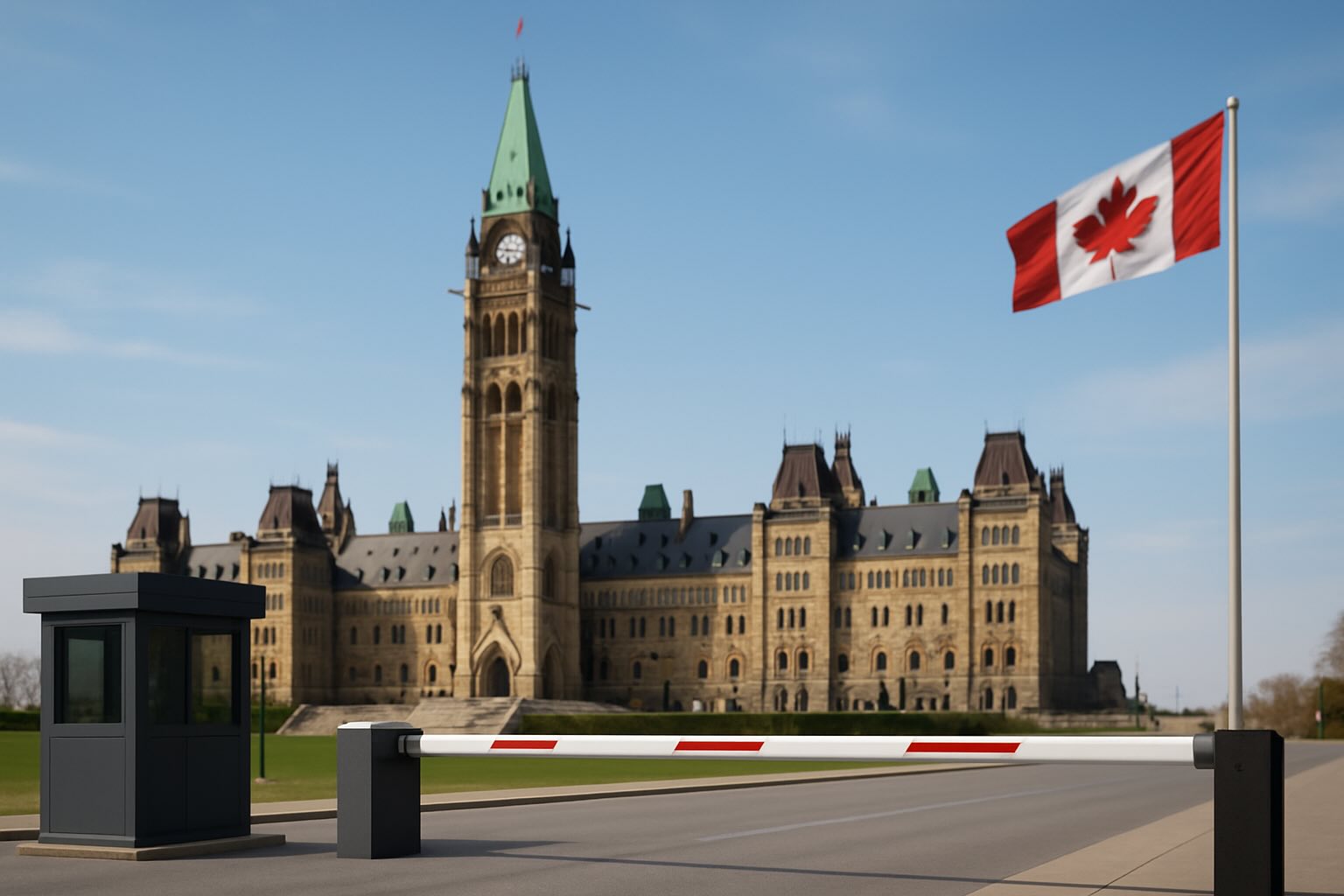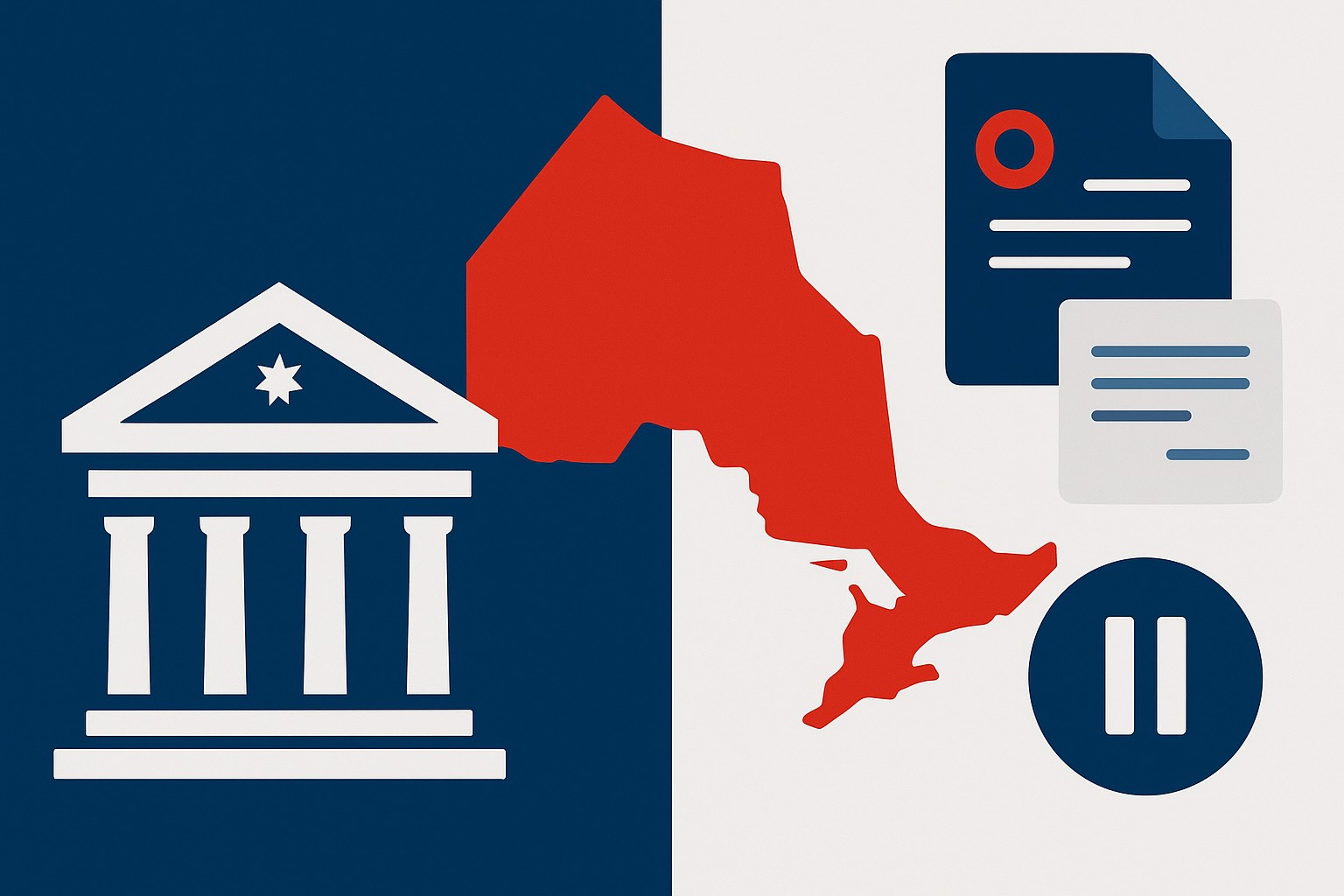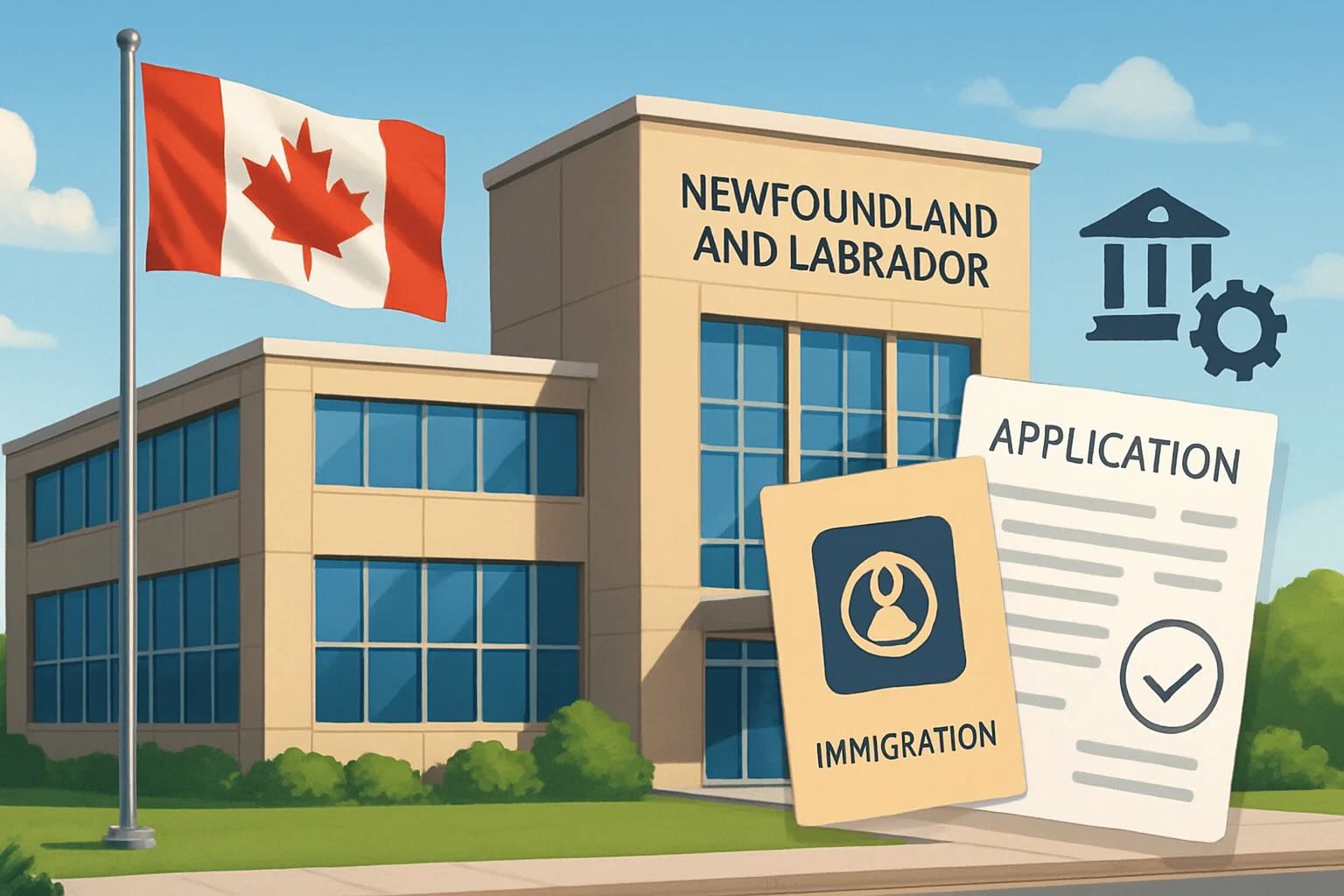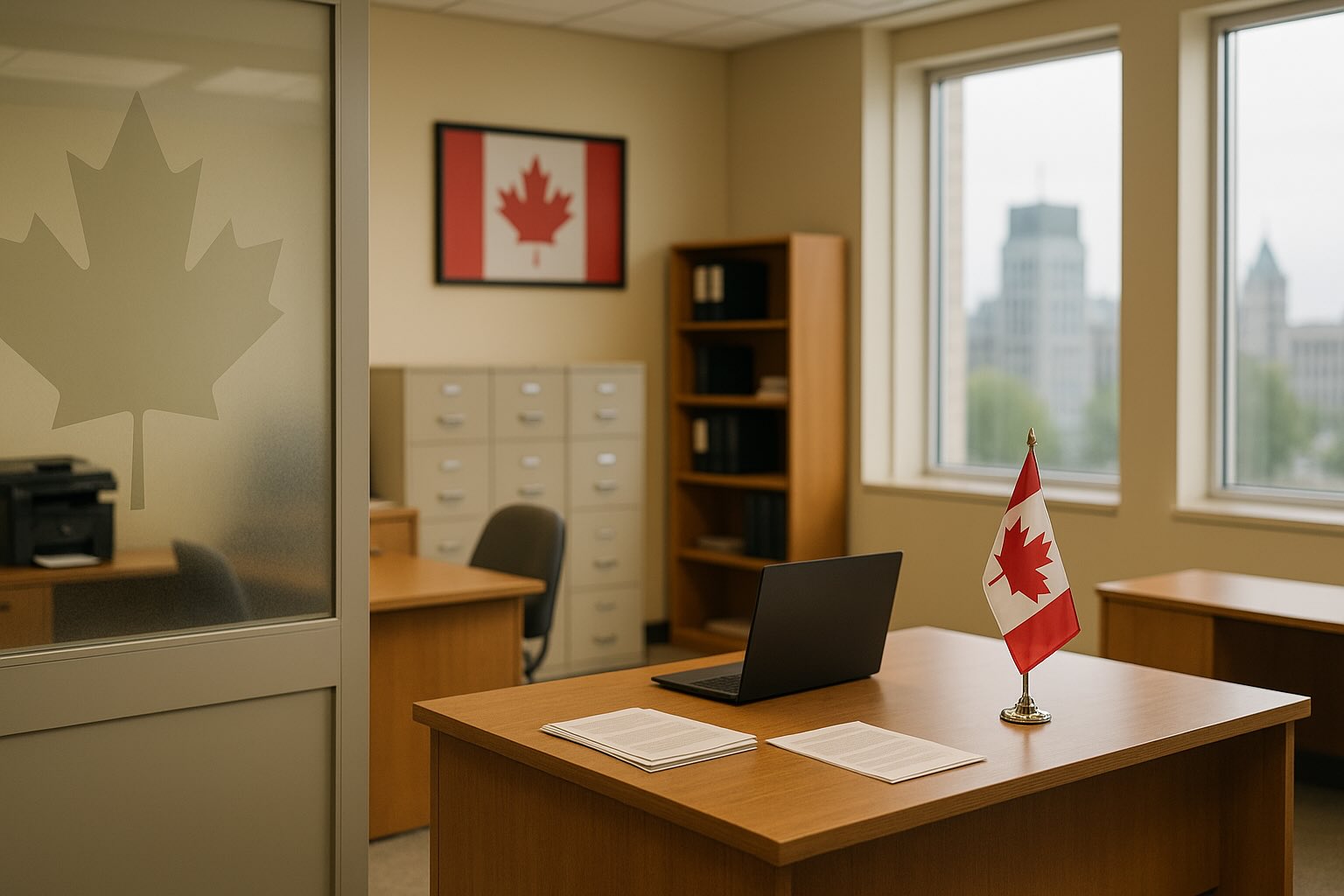
Conservatives send clear signal on Bill C-12
On November 20, speaking alongside fellow Conservative MP Brad Redekopp, Michelle Rempel Garner said the Conservatives will table “broad and constructive” amendments during the upcoming clause-by-clause review of Bill C-12, a border and immigration bill, at committee stage.
Rempel stressed that Canada’s current immigration and asylum system is “difficult to operate and complex to manage.” Under the combined strain of rising temporary resident numbers, growing asylum caseloads, pressure on social infrastructure, and security screening concerns, she said public confidence in the immigration system is eroding. In her view, the core issue lies in “how the system functions,” rather than in Canadians’ attitudes toward newcomers themselves.
She also pointed to recent immigration and asylum reforms in the United Kingdom, which have reshaped that country’s political landscape. According to Rempel, Canada’s per capita volume of asylum claims has now surpassed that of the UK, despite Canada having a much smaller population—something she argued intensifies concerns about the system’s overall capacity.
Key elements of Conservative amendments to Bill C-12
Rempel said the Conservatives intend to bring forward a full suite of amendments at the House of Commons Standing Committee on Public Safety and National Security, with the goal of addressing long-standing operational issues and restoring confidence in the federal immigration system.
According to her description, the main directions of the proposed amendments include:
- Strengthening the asylum processing system: Improving the efficiency and design of refugee and asylum procedures, shortening processing times, and reducing case backlogs.
- Reducing incentives for unfounded or fraudulent claims: Adjusting rules and eligibility criteria to limit abuse of the asylum system and reduce waste of public resources.
- Updating detention, removal, and appeals mechanisms: Re-examining standards for detention and release, optimizing removal processes, and simplifying lengthy, complex appeal structures.
- Modernizing criminality and removal rules: Revising thresholds such as criminal inadmissibility so they better align with current public safety and societal expectations.
- Improving transparency at federal immigration bodies: Requiring immigration and border enforcement agencies to provide more detailed operational data and reporting to Parliament and the public.
- Addressing gaps at the Immigration and Refugee Board (IRB): Focusing on case allocation, processing efficiency, and resource distribution to curb systemic delays.
- Strengthening identity verification and security screening: Seeking a new balance between security and privacy, with more robust tools to screen higher-risk cases.
- Linking eligibility rules to system capacity: More explicitly incorporating real-world capacity in housing, healthcare, and social services when setting benefit levels and eligibility criteria.
Rempel emphasized that the goal of these proposals is to “fix the system, not blame people”—that is, to reform institutional frameworks and processes rather than targeting newcomers or applicants themselves.
Public confidence and system capacity under strain
During the announcement, Rempel repeatedly returned to the issue of “public trust.” She noted that multiple opinion polls show declining support for higher immigration levels, but argued this stems primarily from frustration with how the system operates, rather than hostility toward immigrants.
She outlined several pressures currently facing the system:
- Rising asylum claims and longer processing times: Backlogs leave applicants in prolonged uncertainty and increase administrative and operational costs.
- Growth in temporary foreign workers and international students: Including temporary foreign workers and study permit holders, adding cumulative pressure on the labour market, housing, and local services.
- Increasing costs for healthcare and social programs: Higher spending on healthcare, social benefits, and related public services is fueling debate about fiscal sustainability and fairness.
- Tight housing supply and declining affordability: Particularly pronounced in major cities, where housing issues are frequently discussed alongside immigration numbers and long-term planning.
- Reports of gaps in security and verification processes: External observers have raised questions about the rigour of some security screening and identity verification procedures.
- Complex and lengthy appeal systems: Multi-layered appeals and reviews lengthen overall processing times, increase costs, and weaken the finality of decisions.
- Difficulties removing individuals without legal status: Execution of removal and departure orders is hampered by procedural design, resource constraints, and challenges in international cooperation.
In Rempel’s view, these factors interact to make the immigration system “harder to manage, harder to administer, and harder for Canadians to have confidence in.”
What is Bill C-12?
Bill C-12 is a federal border security and immigration bill currently being advanced by the government. Its core purpose is to update and strengthen the legislative framework governing border enforcement and immigration management, particularly through modernizing the Immigration and Refugee Protection Act (IRPA).
In terms of positioning, Bill C-12 seeks to update the system in several key areas:
- Border enforcement and legal authority: Providing clearer and more consistent statutory authority for federal agencies such as the Canada Border Services Agency.
- Identity verification and information collection: Defining what types of information can be collected and verified during entry, stay, and enforcement actions, and how this should be done.
- Detention and release rules: Codifying elements of existing practice into law, including detention criteria, release requirements, and oversight mechanisms.
- Management of individuals without legal status: Clarifying procedures for people who enter without authorization or overstay, including inadmissibility findings, removal orders, and follow-up actions.
For the government, Bill C-12 is framed as key legislation to “strengthen border security and protect the integrity of the system.” For opposition parties, it also serves as a vehicle to push for procedural reform and greater transparency.
Potential impact of Bill C-12 on enforcement and immigration processes
Based on the bill text and public explanations to date, Bill C-12 could influence practical operations in several ways:
1. Border enforcement and identity verification powers
- Expanded powers to verify and collect information: Granting federal enforcement bodies clearer legal authority to request additional information, confirm identity, and collect data in defined circumstances.
- More unified identity management standards: Including procedures for biometric and biographic information (such as fingerprints and facial recognition) as well as traditional identity documents.
2. Inadmissibility, detention, and release procedures
- More detailed inadmissibility and detention criteria: Clarifying how authorities respond in cases involving security risks, unclear identity, or serious violations.
- Codified rules for detention and release decisions: Turning some operational practices into legal requirements, including conditions of release and monitoring for higher-risk cases.
3. Document issuance and status management
- Adjustments to visas and permit conditions: Authorizing immigration officers, in the public interest or for security reasons, to modify, add, or revoke conditions on visas, work permits, study permits, and other documents.
- Tools to handle “identity not fully established” cases: Providing clearer legal pathways to decide what restrictions or conditions apply when identity cannot be fully confirmed.
4. Execution of removal and inadmissibility decisions
- Reinforced removal authorities: Setting more explicit requirements for timelines, steps, and conditions in executing removal orders, with the aim of reducing indefinite delays.
- Streamlining certain administrative processes: Integrating and simplifying procedures in cases involving security risks, serious crime, or clear non-compliance to improve enforcement efficiency.
These changes could improve consistency and efficiency in enforcement, while simultaneously sparking continuing debate over the limits of state power, rights protections, and transparency.
What comes next: Committee review and political debate
Bill C-12 has now moved into detailed study at the relevant House of Commons committee. The extensive Conservative amendment package is expected to become a focal point of debate during clause-by-clause review.
Against the backdrop of domestic housing pressures, rising demands on social services, and a global trend toward tighter immigration and asylum policies, how Canada balances its long-standing tradition of openness with growing public concern will likely be reflected in the final version of Bill C-12.
For those following Canadian immigration and study-abroad policy, several upcoming developments will be critical: how far the committee is willing to accept Conservative amendments; how parties trade off border security and human rights protections; and what implementation details emerge once Bill C-12 is ultimately passed. All of these will directly shape future asylum procedures, the management of temporary residents, and day-to-day security screening practices.









